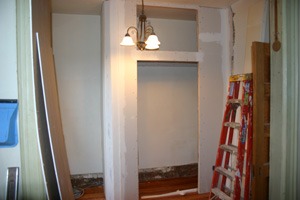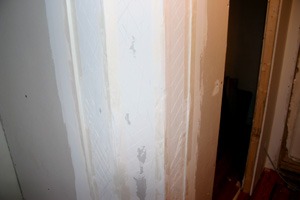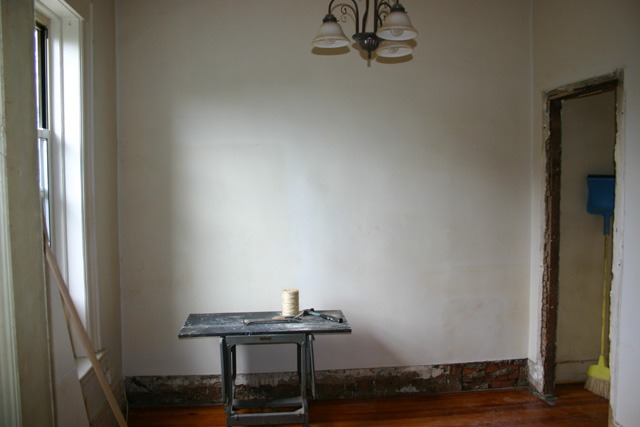The guys at Kamco were right. Quarter-inch drywall can curve to a minimum five-foot radius, dry. Wetting/scoring it can reduce that to as little as three feet “if you’re really good!” The problem is, the radius of this corner is about ten inches. That’s even too shallow for High Flex, which I could only get by special order and only in palette quantities anyway.

Anyway, I bought two sheets of 1/4″ drywall at Kamco, one for experimentation and one for production. I sliced one sheet up into the 14″ panels I needed, scored the backs and stuck them in my steam shower for an hour. But that didn’t give me the flex I needed so I poured warm water on them for about 15 minutes. As soon as I took them out of the bath I knew it wasn’t going to work. The panels crumbled about halfway to the radius I needed. Drat!
So, Yet Another Plan B. I’m going to attempt to make the curve with plaster and a home-made plaster knife cut to the radius I need. It will have wings to rest on the surrounding 1/2″ drywall.

The next job is a run to Lowes to see if they have a plaster bonding agent like PlasterWeld. I also need to look for some material I can use to make that plaster profiling knife. At the moment, all I can think of is masonite with a couple of coats of sealer on the edge to reduce friction.
It doesn’t have to be perfect. It just has to get me in the ballpark. As the saying goes, “there ain’t no f*ck up that a sander can’t fix up”. I’m just dreading that job with my lungs still congested from my recent bad cold.
I’m going to have to retard the heck out the plaster to give me a good working time. I usually use white vinegar for this, although milk works in a pinch.
A neighbor asked why I don’t just do this with joint compound. Joint compound is just liquid dust. When dry, large accumulations of joint compound have almost no hardness or grip.

